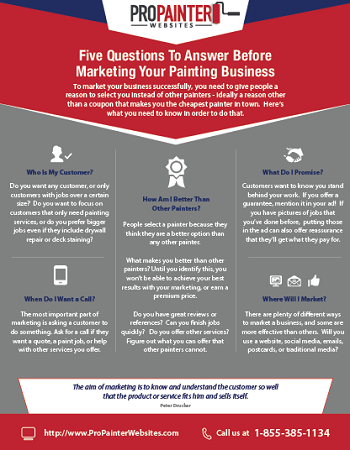Variables To Take Into Consideration For Business Outside Paint By Period: Necessary Information You Need To Have
Variables To Take Into Consideration For Business Outside Paint By Period: Necessary Information You Need To Have
Blog Article
Content Written By-Aguilar Rosendal
When you're planning a commercial exterior paint job, seasonal factors can make or break your outcomes. the red house painters 'll intend to think about how temperature level and moisture impact paint application and drying out times. Choosing have a peek at this website can ensure your paint adheres appropriately and lasts longer. Yet which seasons are truly the best for this type of work? Allow's check out the key elements that can influence your project's success.
The Effect of Temperature Level on Paint Application
When you're planning a commercial exterior paint project, the temperature can significantly influence how well the paint sticks and dries.
Preferably, you want to paint when temperature levels vary in between 50 ° F and 85 ° F. If it's also cold, the paint may not treat appropriately, causing concerns like peeling off or splitting.
On the other hand, if it's as well warm, the paint can dry as well rapidly, protecting against proper bond and resulting in an unequal surface.
You need to likewise think about the moment of day; early morning or late afternoon provides cooler temperature levels, which can be much more favorable.
Constantly check the supplier's suggestions for the particular paint you're utilizing, as they typically offer guidance on the optimal temperature variety for optimum results.
Humidity and Its Effect on Drying Times
Temperature level isn't the only environmental variable that affects your industrial external paint project; moisture plays a significant duty too. High moisture degrees can decrease drying times significantly, influencing the general top quality of your paint task.
When the air is saturated with wetness, the paint takes longer to cure, which can cause concerns like bad bond and a greater danger of mold growth. If you're painting on a particularly damp day, be gotten ready for extended delay times in between layers.
It's critical to check regional climate condition and strategy as necessary. Ideally, aim for humidity levels between 40% and 70% for optimal drying.
Keeping these consider mind guarantees your task remains on track and delivers a long-term finish.
Best Seasons for Commercial Exterior Painting Projects
What's the very best time of year for your business external painting jobs?
Spring and early autumn are commonly your best bets. During these periods, temperatures are moderate, and humidity degrees are frequently lower, developing suitable conditions for paint application and drying.
Avoid summer's intense heat, which can create paint to completely dry too swiftly, causing poor adhesion and surface. In a similar way, wintertime's cool temperatures can hinder proper drying out and healing, risking the durability of your paint job.
Go for days with temperatures between 50 ° F and 85 ° F for ideal results. Remember to inspect the neighborhood weather forecast for rainfall, as damp conditions can wreck your task.
Preparation around these aspects guarantees your paint project runs efficiently and lasts much longer.
Conclusion
In conclusion, intending your commercial external painting jobs around seasonal considerations can make a significant distinction in the outcome. By organizing job during the optimal temperatures and moisture levels, you'll make sure better bond and drying times. Bear in mind to watch on neighborhood weather prediction and select the right time of year-- springtime and early loss are your best choices. Taking these steps will assist you accomplish a sturdy and professional surface that lasts.
